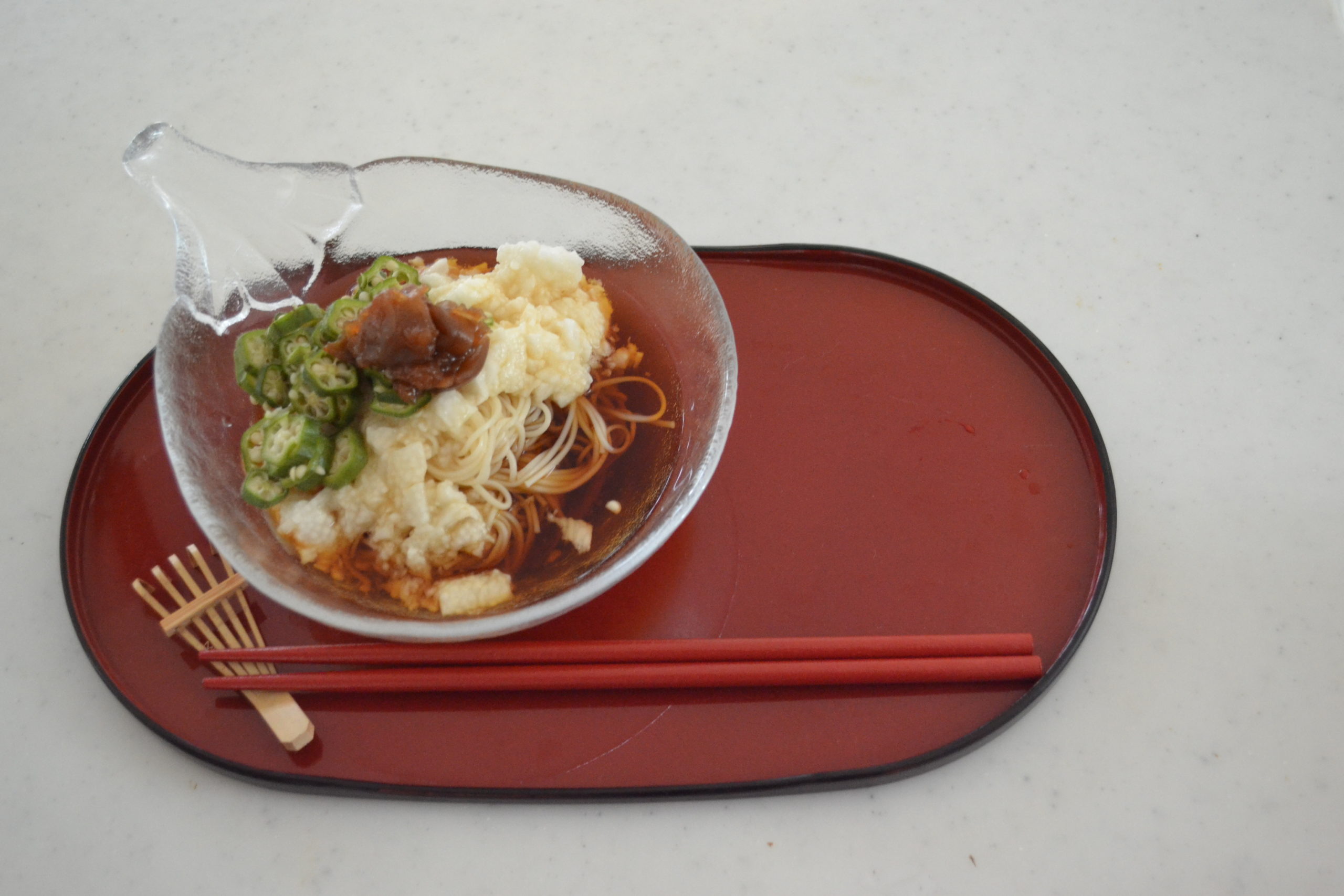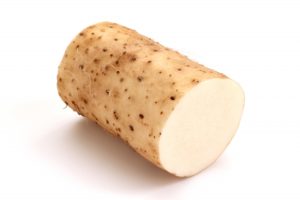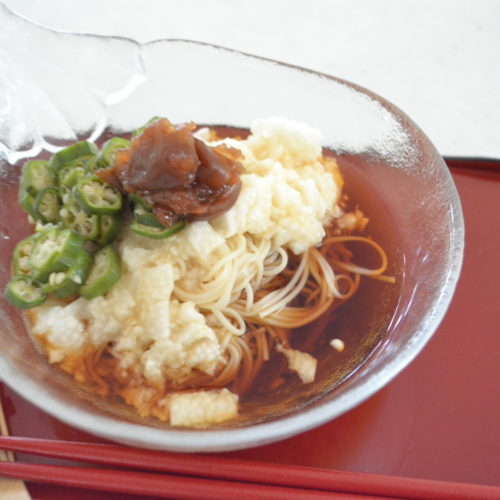Sticky Summer Somen noodles | Nagaimo and Okura Somen Noodles

We love sticky food
Japanese love stickey, slippery, slimy food that people from other food cultures often find it weird.
Nattō (fermented soy beans) is the one maybe you have heard about it.
There are more sticky food in our kitchen, and I will show you how we actually enjoy it.
Once you taste it, you may possibly be addictive.
Here is one of the sticky food that we love, Okura.

Okura is so versatile in usage.
The easiest way to enjoy Okura in Japanese way is, chop it and mix with a dash of soy sauce, sprinkle bonito flakes. That delicious side dish.
Or you can mince it and mix with salad dressing. You can make your salad dressing cling better to the vegetables.
Okura is relatively easy to find in any other country, so you can enjoy it like we do.
Here is Nagaimo, also known as Chinese yam.

When you grate Nagaimo, it makes slippery and slimy paste that we love.
Actually, there are two types of yam in the market.
The other one is Yamaimo, as known as Japanese yam, that makes more dense sticky paste.
Nagaimo is less expensive and you can easily find in the market, but you can choose whichever you like.
I prefer Nagaimo for noodles because it goes down throat so comfortably.
The slippery texture is especially appreciated in the summer because Japanese summer is hot and humid, sometimes we lose appetite.
Health benefit of sticky food
These sticky and slippery foods are packed with many healthy benefit.
They are full of soluble fiber, minerals and antioxidants.
Growing up eating sticky foods, I’ve been told that these foods are good for your stomach.
The Study shows the gastrointestinal function in rats shows that Chinese yam extract not only aids in digestion but can help turn some intestinal flora in the stomach into helpful bacteria.
Well, our anciestors are so smart that knows the function!
Caution for allergies
Some people have an allergic reaction to Nagaimo.
I myself have a mild allergic to Nagaimo. My skin gets itchy when I try to grate a piece.
So I try not to touch it directly, and I don’t grate it but pound in a plastic bag.
You can still eat Nagaimo, if you get ichness. However, if the Nagaimo paste makes your lips or tongue itchy, you may want to stay away from it.

Sticky Summer Somen noodles | Nagaimo and Okura Somen Noodles
Equipment
- frying pan (or pot)
Ingredients
Mentsuyu (Japanese noodle dipping sauce)
- 20 g Katsuobushi (bonito flakes)
- 1 dried kombu kelp (10cm ×5cm)
- 2 cups Mirin
- 2 cups soy sauce
Other ingredients
- 1 bunch Somen noodles (per serving)
- 5 cm Nagaimo (Japanese yam) per serving
- 2~3 pieces Okura per serving
- 1 Umeboshi per serving
- 2 tbsp Mentsuyu + 2 tablespoons water per serving
Instructions
Mentsuyu
- Put your Katsuobushi and Kombu kelp in a pot.Pour mirin and soy sauce.Turn the heat to medium and when it reaches a boil, turn the heat to low and simmer gently for 10 minutes.Allow it to room temperature and pass through a sieve.This is a concentrated Mentsuyu, so dilute with the cold water before you serve.
Toppings
- Slice boiled Okra and set aside.
- Peel the Nagaimo yum and cut into chunks. Put it in a plastic bag.Pound into a slimy paste with a rolling pin I used to use a grader to make a paste, but lately, I found this method to make it into a paste.
- Now boil the Somen noodles.I always use a frying pan to boil the noodles. It takes a much shorter time to cook.You don't really need time to cook Somen noodles. It requires only 90 seconds.It depends on the package instructions, but in my experience, 90 seconds is the best to have a nice texture.
- After 60 seconds, add a quarter cup of water and bring it to a boil again, it will take 30 seconds.Drain and wash the noodles until the sticky stuff is washed away.Add ice cubes to improve the texture and create firmness.Drain well and drip off any excess moisture.
- Transfer the noodles in a bowl and topped with Nagaimo paste and Okra.And for the final touch, put some Umeboshi tear into small pieces. Put the seed in the Mentsuyu sauce. Mash it in the sauce to give the sourness to it.
